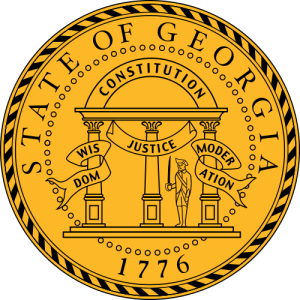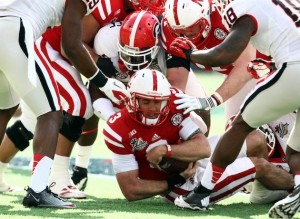 Georgia Population 2013
Georgia Population 2013
Based on estimates and the studies by the United States Census Bureau, the population of Georgia in 2013 is estimated to be 9,919,945, which is the 8th largest population in the United States. Based on the last census in 2010, this shows a 2.4% increase from the current population. Based on the population and based on the area of the state, the population density of the state is about 165 people per square mile, ranked the 18th largest population density in the United States.
Georgia Population Projections
Based on the historical and current trends of the state, the population is expected to reach about 10.72 million people by the year 2015. This population would be a 8.1% increase from the current population of Georgia. Then, by the year 2030, the population is expected to reach approximately 14.44 million people. This population would be a 45.6% increase from the current population. The majority of the state population is still expected to live in the Metropolitan Atlanta region of the state.
Georgia Land Mass
Georgia measures to be about 300 miles long and 230 miles wide. The state also has a square area of 59,441 square miles, making it the 24th largest state in the country. About 1,520 square miles of the state are covered by water, compared to the approximate 57,919 square miles covered by land. Brasstown Bald, also known as Mount Etonah, is the highest point in the state, which reaches an approximate 4,784 feet above sea level. The lowest point in the state is at the Atlantic Ocean, which reaches sea level. The geographic center of Georgia is located in Twiggs County, 18 miles southeast of Macon. Five states border Georgia: North Carolina, South Carolina, Florida, Alabama, and Tennessee. The Atlantic Ocean also borders the state on the eastern side of the state.
Georgia is made up of six different geographic land areas: the Atlantic Coastal Plain, the East Gulf Costal Plain, the Piedmont, the Blue Ridge Region, the Appalachian Ridge and Valley Region, and the Appalachian Plateau. The Atlantic Coastal Plain is the portion of the state that lies along the shores of the Atlantic Ocean, making up approximately a quarter of the state. This area tends to be fairly flat, but also has some swampy areas as well. To the east of the Atlantic Coastal Plain is the East Gulf Coastal Plain, covering up another quarter of the state. This area is also fairly flat with some swampy areas as well. The main difference between this portion of the state and the Atlantic Coastal Plain is that this area is less sandy and also the rivers in this portion drain into the Gulf of Mexico, while the rivers in the Atlantic Coastal Plain drain into the Atlantic Ocean. To the northwest of the Atlantic Coastal Plain and the East Gulf Coastal Plain lies the Piedmont. This area tends to be quite hilly, but rises in elevation from the Fall Line to the point where it meets the Appalachian mountain regions. The Fall Line is the point where the rivers will fall from the higher elevations and, as a result, form waterfalls and rapids. The Blue Ridge Region is in the northeast corner of the state, filled with forested mountains, making up the highest points in the state. The Appalachian Ridge and Valley Region is directly to the west of this region and is mainly made up of fertile valleys. Lastly, the Appalachian Plateau is in the northwest corner of the state, mainly made up of valleys and ridges.
Georgia Demographics
Approximately 51.1% of the state’s 9.92 million people is female, while the other 48.9% of the population is male. Also, approximately 63% of the population identifies as white (including Hispanic or Latino). But, out of that 63%, about 9% do identify as Hispanic or Latino and the other 54% as Caucasian. Those that identify as Black or African American make up 31% of the entire population of the state of Georgia, which is over twice the amount of African Americans in the average parts of the country. The rest of the population is made up of those that identify as Asian, American Indian, Native Hawaiian, other Pacific Islanders, Alaskan Native, or those that identify as two or more races. These other races make up about 6% of the Georgia population.
Georgia Religion
The population of Georgia identifies as religious at a rate slightly higher than the national average. About 51% of the state population identifies as religious, compared to the national average of 49%. Out of the 51%, about 22% identify as members of the Baptist Church, making it the largest denomination in the state of Georgia. The next largest denomination in the state is the Methodist Church, making up approximately 8% of the population. All the other Christian denominations make up about 19.6% of the population. Those who identify as Jewish, Islamic, or Eastern religions only make up 1.4% of the population.
Explore Georgia Tourism Video
 Georgia Sports
Georgia Sports
The state of Georgia has teams represented in three of the major professional sports: baseball, basketball, and football. All three of the teams in the state are based out of the city of Atlanta. The Atlanta Braves represent the state in Major League Baseball. The team plays at Turner Field, which could hold an approximate 49,743 people. The Atlanta Hawks represent the state in the National Basketball Association. The Hawks play in the Philips Arena, which can hold approximately 18,729 people. Lastly, the Atlanta Falcons represent Georgia in the National Football League. The Falcons play in the Georgia Dome, which can hold an approximate attendance of 71,250, which is more than the Philips Arena and Turner Field combined.
Georgia and the Media
Georgia is home to 48 television broadcast stations, including CNN, TBS, and TNT. The state also has the first licensed radio station in the southern parts of the United States. This radio station is called WSB-AM. In fact, the Metropolitan Atlanta Area ranks the ninth largest media market in the country.
Other Resources
Learn more about the state of Georgia with the following resource.


